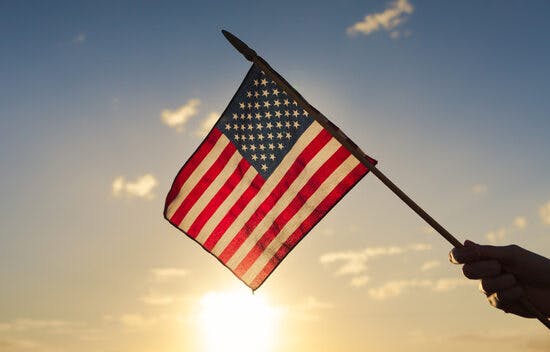



AP Government Required Supreme Court Cases
25 items

McCulloch v. Maryland | BRI’s Homework Help Series
Video
Video
4 Min
McCulloch v. Maryland was the 1819 Supreme Court case dealing mostly with the issue of Federalism. The creation of a National Bank was encouraged by Alexander Hamilton, but opposed by Thomas Jefferson, due to lack of authority given by the Constitution. A National Bank was chartered, but then died 20 years later. In 1816, a National Bank was re-instated to help deal with debts from the War of 1812. This Second National Bank, established in Maryland, was taxed heavily by Thomas Jefferson and the State of Maryland. Federal Bank Cashier, James McCulloch, refused to pay the tax, stating that the state did not have the right to tax an institution of the Federal Government. Ultimately, the Supreme Court stated that Congress had the right to create the National Bank, under the Necessary and Proper Clause. Also, the State of Maryland did not have the right to tax the National Bank and the Federal Government under the Supremacy Clause.
4 Min
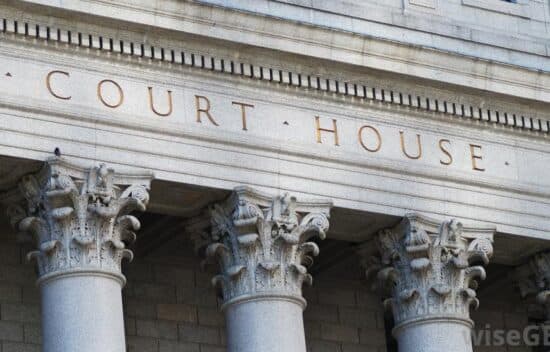
McCulloch v. Maryland (1819)
Lesson - 4 Activities
Lesson
4 Activities
Case background and primary source documents concerning the Supreme Court case of McCulloch v. Maryland. Dealing with the Constitution's Necessary and Proper Clause, this lesson asks students to asses to what extent the Necessary and Proper Clause grants a new power to Congress and what is the meaning of "proper" in this context.
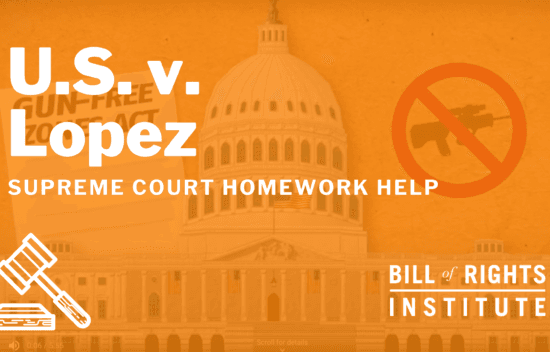
U.S. v. Lopez | BRI’s Homework Help Series
Video
Video
6 Min
This Homework Help narrative explores the landmark case of U.S. v. Lopez and its lasting impact on federalism. Students will study the topic of federal power and street crime while forming their own opinions on the merits of the case.
6 Min

United States v. Lopez (1995)
E Lesson
E Lesson
20 Min
What are the limits of Congress’s power under the Commerce Clause? This question was taken up by the Supreme Court in the case of U.S. v. Lopez. This lesson explores the case and its relationship to Federalism.
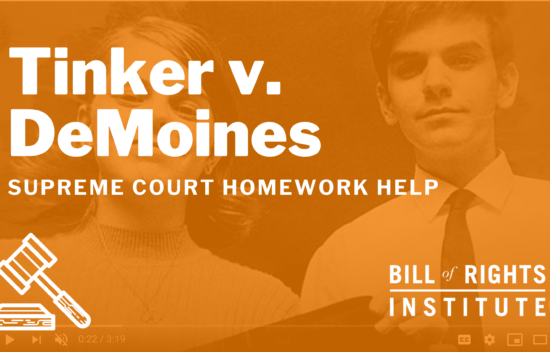
Tinker v. Des Moines | Homework Help from the Bill of Rights Institute
Video
Video
3 Min
Why did a subtle act of protest against a foreign war reach the Supreme Court? In 1965, students John and Mary Beth Tinker wore black armbands to school to protest the United States’ involvement in the Vietnam War, despite the Des Moines school district prohibiting such an act. The Tinkers sued the district for violating their First Amendment rights, and the Supreme Court ruled in their favor in a 7-2 decision. While subsequent Supreme Court rulings narrowed the scope of free expression rights at school, Tinker v. Des Moines remains a landmark case that has defined First Amendment rights for students.
3 Min
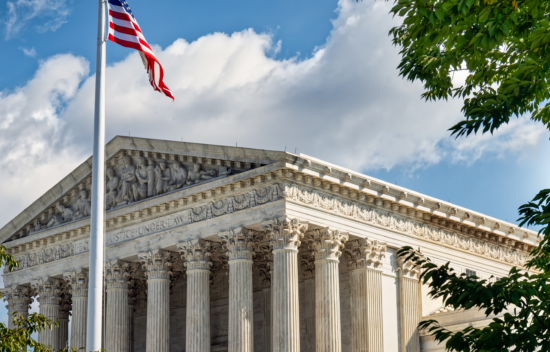
Tinker v. Des Moines (1969)
Lesson - 4 Activities
Lesson
4 Activities
Case background and primary source documents concerning the Supreme Court case of Tinker v. Des Moines. Dealing with students rights and the First Amendment's protection of free speech, this lesson asks students to evaluate the extent to which the First Amendment should protect symbolic speech, and the degree to which that protection should be guaranteed to students in public schools.

Schenck v. United States | BRI’s Homework Help Series
Video
Video
3 Min
Schenck v. United States was a Supreme Court Case that explained some limits to the Freedom of Speech afforded by the First Amendment. During World War I, the US instituted a military draft. Many people released anti-war and anti-government information due to their displeasure with the draft. Charles Schenck, an anti-war socialist, was arrested by the Federal Government for circulating a pamphlet encouraging men to resist the draft and violating the Espionage Act of 1917. The Supreme Court ruled that wartime circumstances changed the rules related to free speech and resulted in the “Clear and Present Danger” rule.
3 Min
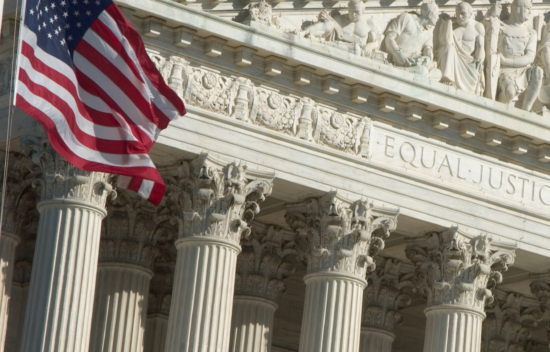
Schenck v. United States (1919)
Lesson - 4 Activities
Lesson
4 Activities
Case background and primary source documents concerning the Supreme Court case of Schenck v. United States. Dealing with the First Amendment's free speech protections and whether it has limits during wartime, this lesson asks students to evaluate the Supreme Court's limitations of free speech set forth in Schenck.

Gideon v. Wainwright | Homework Help from the Bill of Rights Institute
Video
Video
4 Min
Does an individual have a right to a lawyer, regardless of the crime he or she is charged with? In 1961, Clarence Gideon was arrested and charged with breaking and entering and petty larceny in Panama City, Florida. His request for a state-provided defense attorney was denied since Florida law only required doing so for capital offense cases. After Gideon was sentenced to 5 years in prison, he argued that Florida violated the 6th Amendment’s guarantee of the right to counsel. The Supreme Court heard Gideon’s case, in Gideon v. Wainwright, and ruled in a 9-0 decision that the 6th Amendment’s guarantee of an attorney applies to states through the Due Process Clause of the 14th Amendment through incorporation.
4 Min
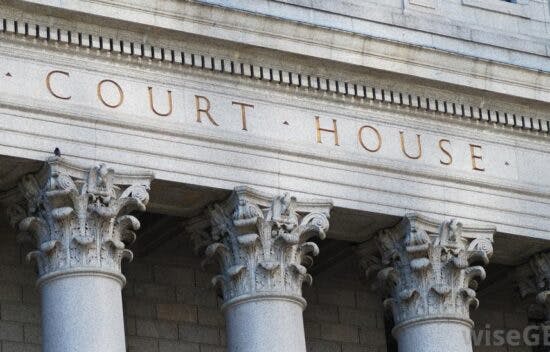
Gideon v. Wainwright (1963)
Lesson - 4 Activities
Lesson
4 Activities
Case background and primary source documents concerning the Supreme Court case of Gideon v. Wainwright. Dealing with whether or not a state must provide a lawyer to the accused, this lesson asks students whether or not they believe the Sixth Amendment guarantees the right to counsel in all cases and whether the government must provide a lawyer to defendants who want one but cannot afford one.
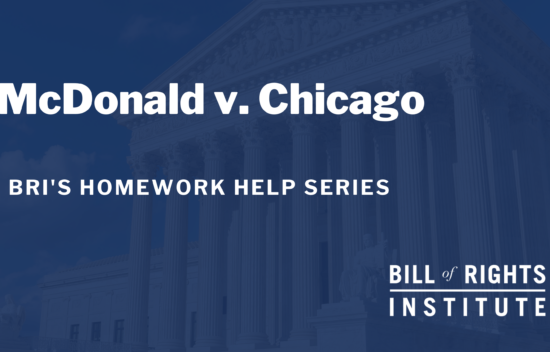
McDonald v. Chicago | Homework Help from the Bill of Rights Institute
Video
Video
4 Min
Does the Second Amendment prevent a city from effectively outlawing handgun ownership? In 2008, Otis McDonald attempted to purchase a handgun for self-defense purposes in a Chicago suburb. However, the city of Chicago had banned handgun ownership in 1982 when it passed a law that prevented issuing handgun registrations. McDonald argued this law violated the Fourteenth Amendment’s Privileges and Immunities Clause as well as the Due Process Clause. In a 5-4 decision, the Court ruled that McDonald’s Second Amendment right to bear arms was protected at the state and local level by the Due Process Clause of the Fourteenth Amendment.
4 Min

Baker v. Carr | Homework Help from the Bill of Rights
Video
Video
5 Min
In this Homework Help video, learn the story of the landmark Supreme Court case of Baker v. Carr. The case explores the question of a state’s right to control electoral lines otherwise known as gerrymandering.
The case ruling concluded that the Supreme Court could hear cases pertaining to redistricting because of the Equal Protection Clause in the 14th Amendment through the process of incorporation which argues that states must adhere to the protections of guaranteed in the Bill of Rights. How did the ruling in this case contribute to the democratic principle of “one person-one vote”?
5 Min

Marbury v. Madison | BRI’s Homework Help Series
Video
Video
3 Min
Marbury v. Madison was the Supreme Court case that established judicial review. William Marbury was a judge appointed at the end of John Adams’ presidency, but never got his official commission papers. Once Thomas Jefferson became president, James Madison refused to deliver the commission papers. Marbury took his case to the Supreme Court and wanted a Writ of Mandamus, requiring Madison to deliver the papers. Ultimately, the court stated that Marbury was entitled to his papers, but it was unconstitutional for the courts to issue a Writ of Mandamus. Thus, judicial review was created and the principle of checks and balances was strengthened.
3 Min
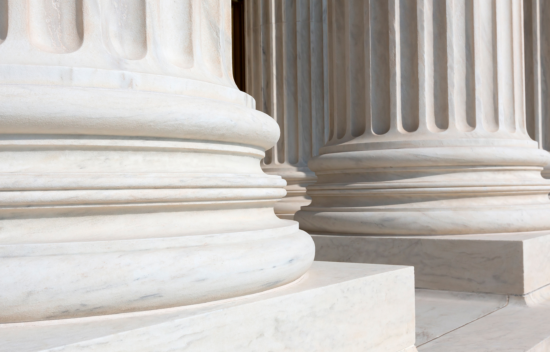
Marbury v. Madison (1803)
Lesson - 4 Activities
Lesson
4 Activities
Case background and primary source documents concerning the Supreme Court case of Marbury v. Madison. Setting the precedent of Judicial review, this lesson focuses on the question of whether or not the Supreme Court should have the power to overturn unconstitutional federal laws.

Citizens United v. FEC | BRI’s Homework Help Series
Video
Video
4 Min
Citizens United v. FEC was a Supreme Court case surrounding campaign finance and corporate involvement in politics. The Federal Election Commission was created in 1971 and greatly regulated the amount of campaign finance political candidates were able to receive. By 2002, the Bipartisan Campaign Finance Reform Act (McCain-Feingold Act) restricted organizations from financing issue-based advertisements on behalf of candidates. Citizens United released a million dollar ad against Hillary Clinton. Before the film aired, Citizens United challenged the McCain-Feingold Act, stating that money was a form of Free Speech, which is protected by the First Amendment. The Supreme Court ruled the McCain-Feingold Act as unconstitutional, but stated that corporations still cannot give money directly to political candidates.
4 Min
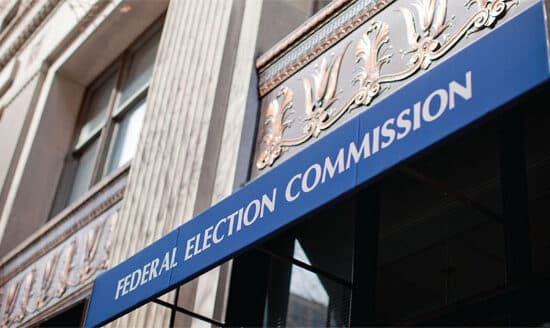
Citizens United v. Federal Election Commission (2010)
E Lesson
E Lesson
20 Min
On January 21, 2010, the Supreme Court issued what is certain to become a landmark ruling in the case of Citizens United v. Federal Election Commission. In a 5-4 ruling, the Court struck down federal limits on what organizations (including non-profit organizations, unions, and for-profit corporations) may say during elections. A ban on direct contributions to candidates was left in place. The majority reasoned that the speech limits violated the First Amendment and chilled political expression. With this ruling, the Court seemed to reverse the trend of the last century, which brought greater limits to corporate political speech and activity.

Wisconsin v. Yoder | BRI’s Homework Help Series
Video
Video
6 Min
Religious liberty is one of the foundational principles of American society, but how should it be balanced with government interests in an educated citizenry? Our second Homework Help video of the semester is on the landmark case of Wisconsin v. Yoder, and how the Supreme Court dealt with this important question.
6 Min

Brown v. Board of Education | BRI’s Homework Help Series
Video
Video
4 Min
Brown v Board of Education was a case brought to the Supreme Court in 1954 after Linda Brown, an African American student in Kansas, was denied access to the white-only schools nearby her house. Future Supreme Court Justice Thurgood Marshall was the lawyer for the case, and argued that segregated schools were inherently unequal. Ultimately, the Supreme Court ruled in favor of Linda Brown and declared segregation unconstitutional under the Equal Protection Clause of the 14th Amendment through incorporation under the premise that the bill of rights also applies to the states. This is one of the landmark cases that led to the passage of the Civil Rights Act of 1964.
4 Min
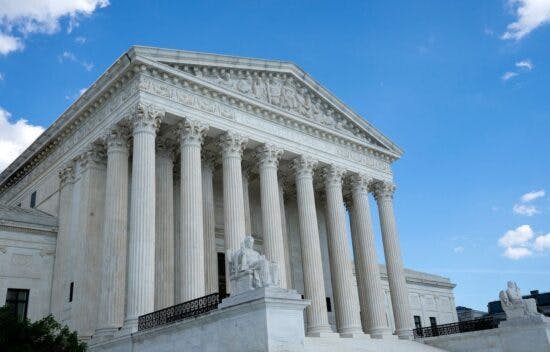
Brown v. Board of Education (1954)
Lesson - 4 Activities
Lesson
4 Activities
Case background and primary source documents concerning the Supreme Court case of Brown v. Board of Education. Dealing with the principle of Equal Protection, this lesson asks students to assess the role played by the Court as the protector of individual rights against the tyranny of the majority.

Plessy v. Ferguson | BRI’s Homework Help Series
Video
Video
5 Min
How did the odious doctrine of “separate but equal” become legally permissible in the U.S.? This Homework Help narrative explores the story of the Plessy v. Ferguson Supreme Court case. Further, analyze how the idea of “separate but equal” violates the Equal Protection Clause of the 14th Amendment through incorporation that was later struck down in the 1954 Brown v. Board of Education Supreme Court Case championing the passage of the Civil Rights Act of 1964. Due to the process of incorporation, the Supreme Court was able to eventually rule that the states had to adhere to the protections listed in the Bill of Rights.
5 Min

Plessy v. Ferguson (1896)
Lesson - 4 Activities
Lesson
4 Activities
Case background and primary documents concerning Plessy v. Ferguson. Dealing with the principle of Equal Protection, this lesson asks students to evaluate the degree to which custom, precedent, and understanding of federalism informed the ruling in the case.

Engel v. Vitale | BRI’s Homework Help Series
Video
Video
6 Min
Is school-sponsored prayer in public schools a violation of the establishment clause of the First Amendment? In 1951, some New York schools began starting the day with a non-denominational prayer. This Homework Help video tells the story of the ensuing landmark Supreme Court case of Engel v. Vitale.
6 Min

New York Times Co. v. United States | BRI’s Homework Help Series
Video
Video
6 Min
How to best balance liberty and security has been a perennial question throughout U.S. history. This Homework Help video explores how the Supreme Court addressed this question in the landmark case of New York Times Co. v. United States.
6 Min

